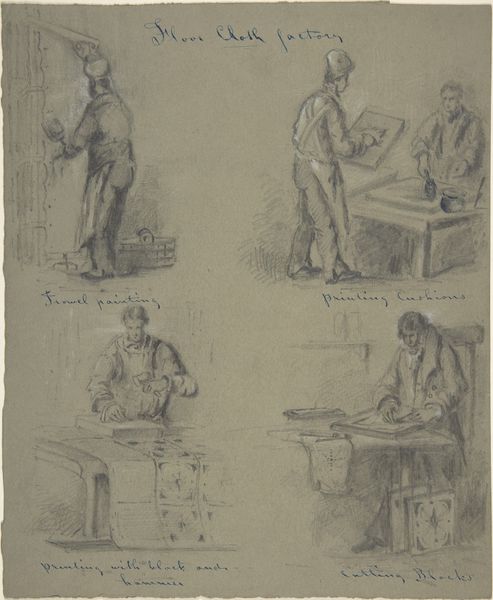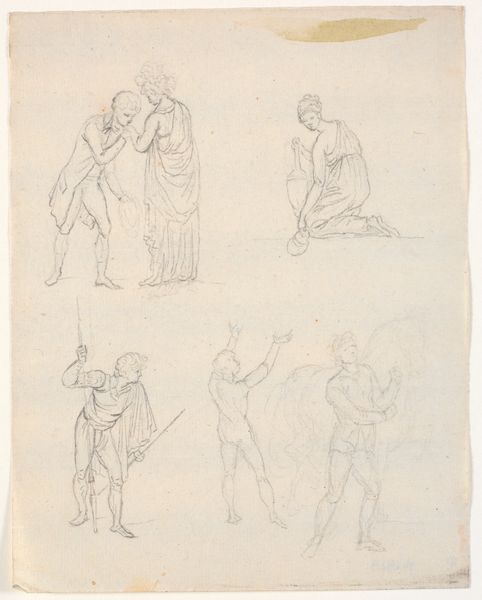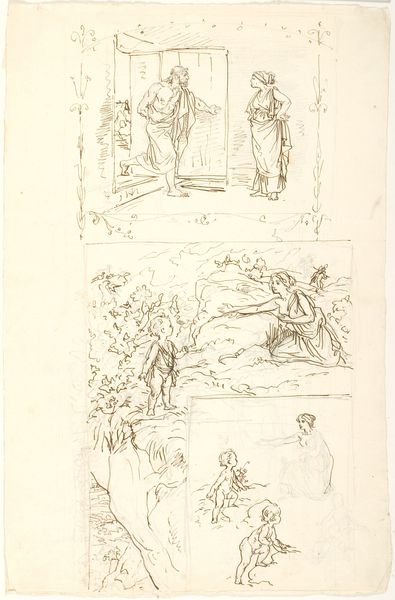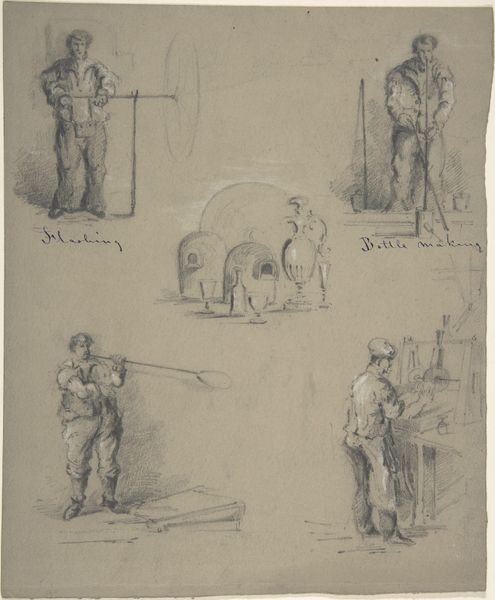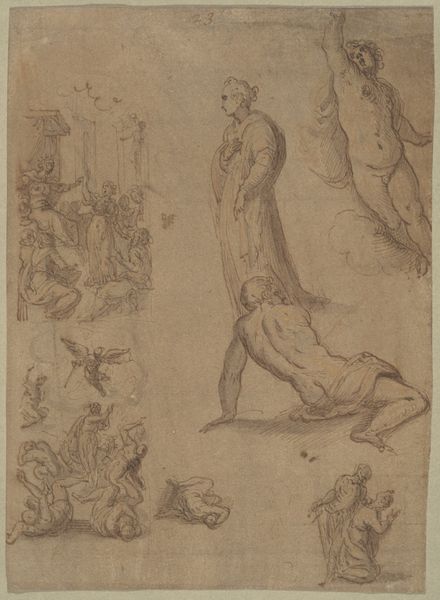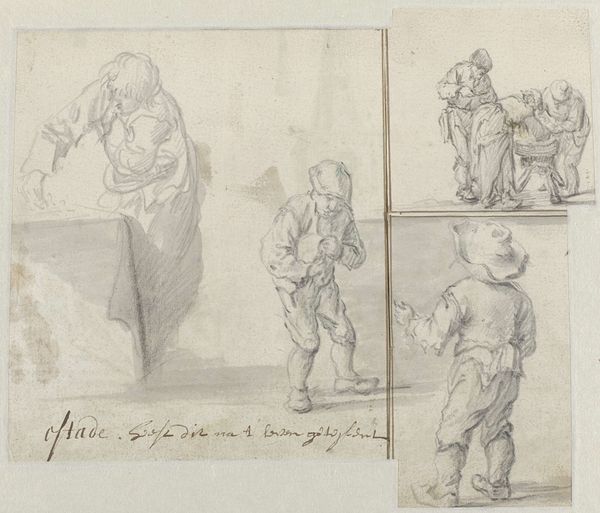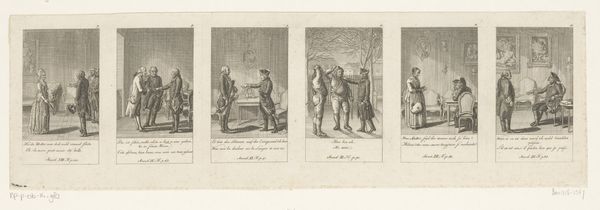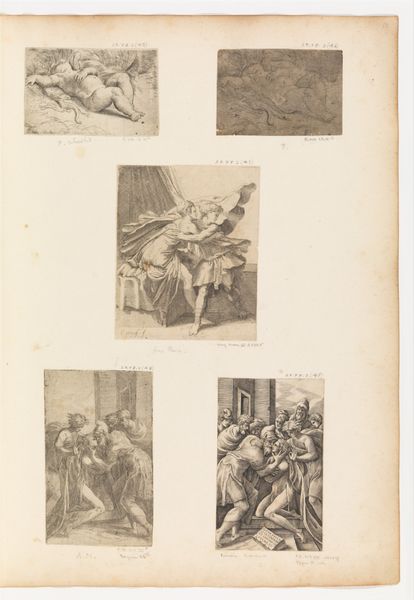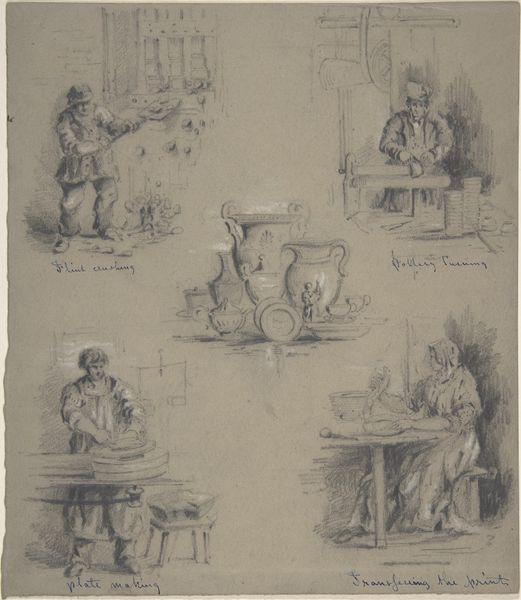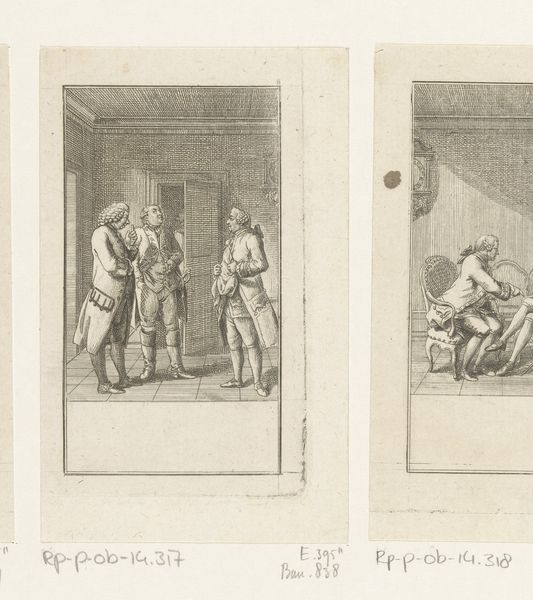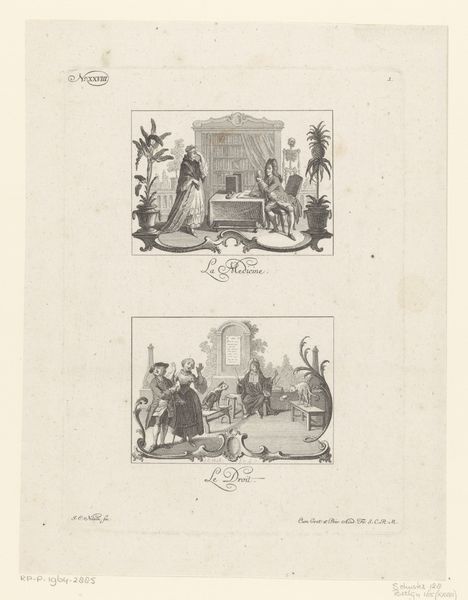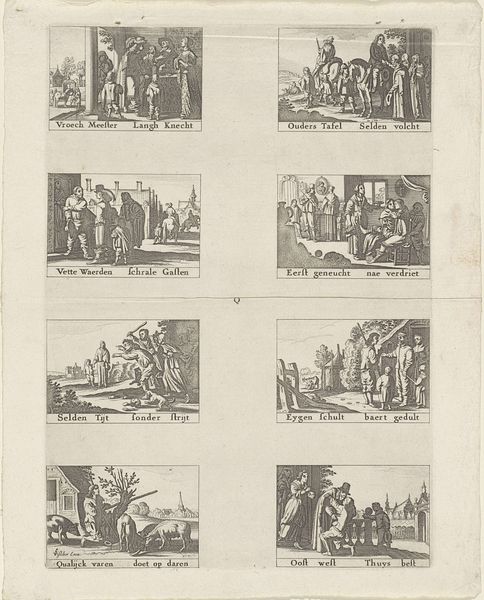
Four drawings showing the manufacture of iron 19th century
0:00
0:00
drawing, print, pencil
#
drawing
# print
#
landscape
#
figuration
#
pencil
#
line
#
genre-painting
#
history-painting
#
realism
Dimensions: sheet: 9 1/8 x 7 1/2 in. (23.2 x 19.1 cm)
Copyright: Public Domain
Curator: Here we have “Four drawings showing the manufacture of iron,” created in the 19th century by an anonymous artist. The work, rendered in pencil, captures various stages of iron production. What are your first impressions? Editor: Immediately, I'm struck by the stark realism. There's a rawness in the depictions of the labor – the figures are bent, focused, and immersed in their work. It’s interesting, seeing such an emphasis on the everyday, almost celebrating labor. Curator: Indeed, the symbolism of industry at that time can’t be overstated. Iron represented progress, modernity, and the burgeoning industrial age. The artist isolates four distinct scenes of creation: casting, cutting, hammering, and rolling the bars, almost as stages of a sacred transformation. Editor: A sacred transformation fueled by exploited labor, we shouldn't forget. These men, nameless and faceless within the composition, are central figures, even as the drawings depersonalize them to functional entities. They are caught between being masters of craft and subjugated tools. Curator: That tension, the simultaneous elevation and exploitation of the worker, is woven into the images themselves. Consider the composition of "Casting Pieces"; figures around the large cauldron recall the historical symbology surrounding metal as it is birthed and transformed by fire, and humans participate in that transformation. This symbolic transformation underscores iron’s critical importance in a rapidly changing society. Editor: Yes, I think it’s also a testament to our enduring interest in progress, in our need to continue moving forward despite the social costs. The artist chose these industrial settings, but through the details--the composition, the line work, even the choice to keep the figures simple--I would also argue that we see reflections of social inequality. It mirrors our continuous fascination with the tension between innovation and those who enable it. Curator: Absolutely. These drawings encapsulate that tension. Perhaps their anonymous origin speaks to the ubiquity of this industry, and of its inherent societal impact during the period. Editor: An anonymous ode to the double-edged sword of progress. Food for thought, thank you.
Comments
No comments
Be the first to comment and join the conversation on the ultimate creative platform.
